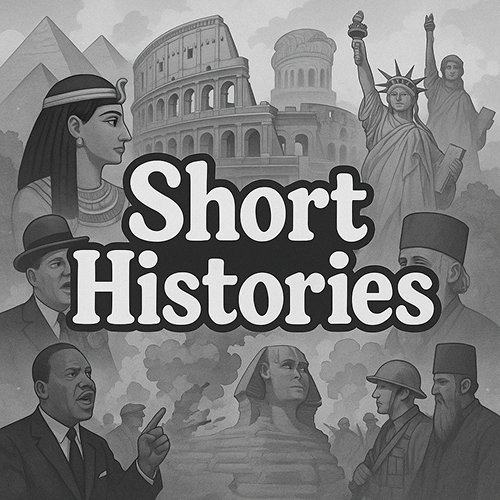The Origins: India
India, the Land of a Million Gods and the world’s largest democracy, is a civilization that stretches back over five millennia. From the sophisticated cities of the Indus Valley Civilization to the freedom struggle that dismantled the British Empire, India’s story is one of continuity, diversity, reinvention, and resilience. It is a place where ancient texts, colonial rule, and digital revolutions all coexist. A vast, vibrant land where the past is never far from the present. Often referred to as the Land of the Rising Sun of the East in its cultural rebirth and resilience, India's influence is both ancient and enduring.
The journey begins around 2600 BCE, in the cities of Harappa and Mohenjo-daro, meticulously planned urban centers with grid layouts, drainage systems, and granaries. This was the Indus Valley Civilization, one of the world's oldest urban cultures, whose script remains undeciphered to this day. Its decline around 1900 BCE paved the way for the migration and mingling of Indo-Aryan tribes, whose Vedic hymns form the foundation of Hindu philosophy.
The Vedic period (1500–500 BCE) ushered in a society structured by varna (class), the Sanskrit language, and religious rites that would eventually evolve into Hinduism. By the 6th century BCE, India saw the rise of Jainism and Buddhism, both of which rejected ritualism and caste. These spiritual revolutions laid the groundwork for India’s long tradition of philosophical inquiry and ethical pluralism.
India’s ancient political identity took shape under great empires. The Maurya Empire (322–185 BCE), led by Chandragupta Maurya and later Ashoka the Great, unified much of the subcontinent and promoted Buddhist values. Ashoka’s edicts, carved in stone, called for tolerance and non-violence. Centuries later, the Gupta Empire (circa 320–550 CE) heralded a Golden Age, a time of advances in mathematics, astronomy, medicine, and art, including the invention of the zero, the concept of infinity, and early surgeries.
India’s medieval era was marked by regional kingdoms and Islamic dynasties. The Delhi Sultanate (1206–1526) established Muslim rule, followed by the Mughal Empire, founded in 1526 by Babur. Under rulers like Akbar, Jahangir, Shah Jahan (commissioner of the Taj Mahal), and Aurangzeb, the Mughals brought architectural marvels like the Taj Mahal, administrative sophistication, and a fusion of Persian and Indian cultures. Akbar’s policy of religious tolerance stands as a landmark of pluralistic governance. Literature, music, and art flourished in regional courts and under Sufi and Bhakti movements.
By the 17th century, European powers, including the Portuguese, Dutch, French, and finally the British, began trading with India. The British East India Company gained dominance after the Battle of Plassey in 1757, exploiting divisions and establishing colonial control. In 1858, following the Indian Rebellion of 1857, the British Crown took direct control, marking the start of the British Raj.
Colonial rule restructured India's economy, drained its wealth, and exacerbated famines. Yet, it also unintentionally seeded modern nationalism through railways, English education, and legal reforms. The freedom movement began with moderate petitions and evolved into mass civil disobedience under leaders like Bal Gangadhar Tilak, Lala Lajpat Rai, and Bipin Chandra Pal. Social reformers like Raja Ram Mohan Roy, Jyotirao Phule, and Savitribai Phule laid foundations for education and equality.
The 20th century witnessed the rise of Mohandas Karamchand Gandhi (The honorific Mahātmā title, derived from Sanskrit, meaning great-souled, or venerable was first applied to him in South Africa in 1914), whose philosophy of satyagraha (nonviolent resistance) galvanized millions. Alongside Jawaharlal Nehru, Sardar Vallabhbhai Patel, and Subhas Chandra Bose, Gandhi led a people’s revolution that eventually forced Britain to retreat. India gained independence on August 15, 1947, but the joy was marred by the trauma of Partition, which created Pakistan and led to mass violence and displacement.
As an independent republic from 1950, India adopted a secular, democratic, and federal constitution, the longest in the world. Under Nehru’s leadership, India pursued socialism, scientific progress, and non-alignment in global politics. The following decades saw wars with neighbors, the Emergency of 1975, Green and White Revolutions, space launches, and waves of economic liberalization starting in 1991. These shifts transformed India into an economic and geopolitical heavyweight.
Today, India is a nuclear power, an IT hub, and a spacefaring nation with missions to the Moon and Mars. Its economy is one of the fastest-growing in the world. Culturally, India is unmatched. It is the birthplace of Bollywood, yoga, classical dance, cricket mania, and culinary marvels. Iconic dishes such as biryani, butter chicken, masala dosa, samosas, dal makhani, rogan josh, chole bhature, and desserts like rasgulla, gulab jamun, and jalebi delight palettes across the globe. Indian cuisine is a reflection of its regions and religions. Spicy, diverse, and rich with history.
India’s linguistic, religious, and ethnic diversity makes it both vibrant and complex. It is home to 22 official languages, over 2,000 ethnic groups, and all major world religions. From the snowy peaks of Kashmir to the tropical shores of Kerala, from the Ganges plains to the tech corridors of Bangalore, India is both ancient and youthful, chaotic and composed, spiritual and scientific.
This is India, a nation of contradictions and confluence, where history breathes through stone temples and buzzing call centers, and where the call for freedom still echoes not only in protests but in poetry, cinema, and every act of democracy. It is a civilization whose influence stretches from ancient trade routes to modern start-ups, proving that in India, the old and the new are not opposites but partners in an eternal dialogue.
Next Time: The Origins: Turkey | Byzantium to Bosphorus Bridges
Once Constantinople and always at the crossroads. Turkey’s past unfolds through empires, sultans, and revolutions that shaped East and West alike.
Please go back to top & scroll gently

